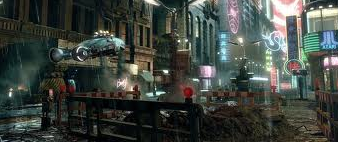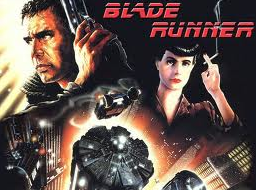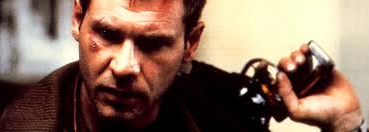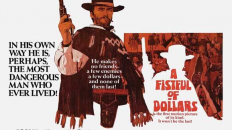by Damien Gerard
In this blog entry, I want to discuss a film that I think paved the way for the genre of Sci-Fi. That film is Blade Runner. For me, Blade Runner is an epic movie on a scale that few films have quite managed to achieve since, even with mega budgets.
It was so difficult to choose between this film and ‘2001: A Space Odyssey’ as that film, released in 1968, well over ten years before Blade Runner, inspired a generation of scientists and predicted a number of things that have since come to pass, like flat screen TVs for instance. However, as we are talking about films that influenced the film genre, I think my choice stands up well.
Ostensibly, Blade Runner is a film noir set in a dystopian future, much like Fritz Lang’s Metropolis in 1927. The saxophone music, the constant rain and the ‘neon trash’ are a complete throwback to the Sam Spade, Philip Marlowe films of the 40s. Call it ‘tech noir’, if you will (also the name of the nightclub in Terminator, fact fans).
Interestingly, the film did very badly at the box offices, with critics citing the slow pace or the distractions of the environment within the film. When we first see Los Angeles 2019, the epic, fire-spewing vista over the city is accompanied by the most wondrous music by the fantastic composer, Vangelis. Flying cars, or ‘Spinners’ as they are known can be seen flitting to and fro across the backdrop, gouts of flame and neon signs depicting brands or holidays off world adorn buildings and pseudo-steampunk airships. The attention to detail is enormous and in an interview with Wired magazine in 2007, the film’s director Ridley Scott cites it as his most complete and personal work to date. It is easy to see why Harrison Ford thought he was playing second fiddle to the scenery.
The actors all portray a very stylised look, from Rachael’s sultry 1950’s look to the washed out ‘flawed hero’ former police officer Rick Deckard. The look does seem to have been influenced by the artwork of an artist called Jean Giraud (or Moebius as he was known) from a magazine called ‘Heavy Metal’ and Ridley Scott and a contemporary author and father of modern cyberpunk, William Gibson both cite Moebius as their inspirations.
The film has gone on to influence the look and feel of a number of other films, Dark City, Strange Days, Batman Begins, Escape from New York and Gattaca to name but a few. Indeed, I am led to believe that Christopher Nolan ordered his entire crew to watch Blade Runner before principal photography started on Batman Begins. If you watch the films above, you can easily see the dark and brooding cities or the ‘man playing god’ themes. The most enduring theme is that of Frankenstein; where a creature created by man goes on to kill its creator; and long after the film has ended questions remain regarding whether mankind is making the right moral and technological decisions as we march inexorably into the future. Even Ridley Scott’s latest offering, Prometheus (the Greek Titan who created man from clay and is attributed with stealing fire from the gods) is so closely linked with the themes of Blade Runner that there are even hints in the ‘Special Edition’ that the two worlds are one and the same.
 There are many great sci-fi films and many films that could have been used to define the genre but for me Blade Runner is more than just cracking entertainment, it is a fully rounded, living and breathing world that has gone on to inspire countless futurists, film makers and writers to explore the inner workings of the world, their own mind, and what it is to be human.
There are many great sci-fi films and many films that could have been used to define the genre but for me Blade Runner is more than just cracking entertainment, it is a fully rounded, living and breathing world that has gone on to inspire countless futurists, film makers and writers to explore the inner workings of the world, their own mind, and what it is to be human.
Damien Gerard is an actor, director, writer and producer from Brighton, Sussex. Check out his website and follow him on twitter






